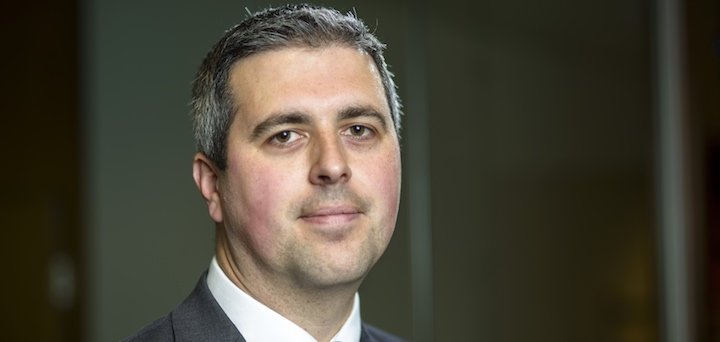
Interest in housing and regeneration among institutional investors is growing. In an exclusive interview for Room151, Chris Rule discusses the Local Pensions Partnership’s approach to investing in shared-ownership, social housing and the private rented sector.
Room151 (151): There’s great demand for housing and regeneration in the UK and also for investments that generate income and have liability matching characteristics. Housing and regeneration offers a great opportunity for long-term investors doesn’t it?
Chris Rule (CR): Yes, we certainly think so. We would place housing related investments within our real estate portfolio and we have an increasing allocation to real estate.
Have you registered for your LGPS Quarterly Briefing? Click here.
Once the administering authorities in the pool have made their decisions on strategic allocation, we then have full delegation on how we implement that and the implementation decision includes, for example, a choice between residential property or commercial property, within real estate.
So, the discussions we’ve been having with our stakeholders are very much around what are the different types of investments we can make? If we look at the cash-flow profile of the pension funds we are working with, they are maturing; they are open funds, still with new cash coming in. However if we look at the balance of cash flows then they are cash-flow negative, if we don’t include investment income.
Once we bring investment income in then we are back into positive territory; looking forward over five to ten years and beyond, that starts to deteriorate and we need to generate more income.
Real estate or indeed infrastructure, which is where some funds may put housing and regeneration, are to us both income generating asset classes. Not exclusively; we look to get a total return from those assets, as we do from any other investments, but the balance between capital gain and income returns, in both cases, hopefully leans towards income more than for other asset classes.
One of the current challenges in these asset classes is that yields are relatively compressed with a lot of money attracted to fairly few opportunities. What we are finding, increasingly, is that to get the long-term investment returns that we desire, we need to “build” yields rather than “buy” them. So, it’s a case of doing more greenfield/new build investments.
With infrastructure or commercial real estate, there is a secondary market of assets that we can buy, although they are relatively well bid. In UK housing, however, there isn’t really an institutional-sized market where you can buy those assets. So we’ve done a couple of things in terms of developing new proprieties and we’ve focussed on build-to-rent rather than build-for-sale. We haven’t tended to take very early stage risk but we have taken planning risk on projects where we feel this is rewarded.
Room151: What are you working on?
CR: We’re building almost two hundred and fifty units in Pontoon Dock, East London, in partnership with Grainger; we’ve completed 120 or so units in West London and we have properties in Lancashire, such as student housing, and elsewhere outside the South East.
I think for us, housing is a relatively broad domain so PRS (the private rented sector) is of interest but equally student accommodation, healthcare and nursing-home type accommodation is also. With all of these areas you can potentially develop more purpose-built accommodation and in the process free up family homes to be restored and repurposed for housing families.
I think the short hand is, we are going to have to build more in this country if we are going to have enough houses. For us, as an institutional investor, we want to invest in diversified portfolios and while housing isn’t without its challenges, it’s attractive for many reasons.
Room151: Is one of those challenges seeing money going out the door from day one?
CR: No, there are small amounts of capital put into planning and design and so on, but the real money isn’t invested until you are on site and start building; the majority of the equity required is in the construction costs. It’s not a case of having a long lead time between putting money in and starting to get rent out – the construction period is around 18 to 24 months.
The J curve that people refer to can be relatively short, but the process for an investment committee to make the decisions is much longer because you have all the negotiations around land acquisition, construction contracts and joint ventures before you can get started.
That can be a frustrating process for stakeholders who might say ‘three years ago we started talking about this – when are the houses going to be built?’
Room151: You’re very close to local authorities who are under pressure to develop more housing. Do you see yourself building partnerships with local authorities or with housing associations?
CR: We would be very open to that, We have had a number of conversations and continue to have conversations with housing associations and similar entities for constructing new properties. I think the link between us as an LGPS pension fund provider and local authorities isn’t one that would afford us any special treatment though.
Local authority planning departments need to be independent, they aren’t going to favour us over any other potential landowner or developer, and I wouldn’t expect them to. That said, I think they understand our world and we understand their world and certainly, where we can form partnerships with local authorities, we will.
One of the challenges for any landowner in this is where do you get the most value for your land and I think from our point of view, we want to invest in these assets for long-term income and growth. That means we don’t tend to want to build for sale. Now of course in some wider schemes, there may be a necessity to have some of the units for sale, but on the whole we want to own these units and then take a rental yield off them.
So, we don’t necessarily think that we are going to be the highest bidder for all those parts of land because if you’ve got a developer that is developing for sale, quite often they can pip you on price. If you’ve got a ten year IRR (internal rate of return) that you’re looking to achieve, versus a developer looking for an 18 month turn-around development profit, they are more likely to pay more for that parcel of land than we may be able to in order to make our investment case.
That’s when you have to start balancing what is the risk and reward that you’re looking for, and be very careful thinking about what price you are willing to pay for these opportunities.
Room151: When the number of housing units is of a certain size, you may get a piece of regeneration with that. If you were involved in that size of project, does the regen also sit in the real estate component of your investments or does that go to infrastructure or does it not matter?
CR: I think it would have to be looked at on a case by case basis. Realistically we have a relatively high cost of capital. We have a discount rate we are trying to make on the overall portfolio which means that we are prepared to take risks in terms of getting that reward. Some of the regeneration elements of housing schemes, on a stand-alone basis, are not necessarily investible propositions when taking into account our target return.
However, there might be regeneration pieces as part of wider schemes — putting connectivity in for internet access or putting in new roads, for example — and where that is part of the overall viability of the scheme then that would sit where we are placing the overall investment. We wouldn’t separate out the regeneration from the housing.
Room151: Are you less interested in social housing than PRS?
CR: It depends on how you look at social housing. We have a separate investment in Heylo Housing, which has helped almost one thousand home owners through shared ownership schemes with around the same again being delivered in the coming few years.
This is somewhere where we’ve made the economics work for the pension fund. We are finding that with building new social housing on a standalone basis it tends not to stack up against our financial objectives, but shared ownership is something that we have done reasonably successfully and it’s a very investible proposition.
Typically, that will sit within our credit portfolio because we’re effectively providing debt on those properties. If it’s equity-type returns we’re investing in, then that’s more likely to be in the private rental sector.
Room151: There’s been some frustration about government pressure to invest in UK housing, which hasn’t always been viable for the LGPS for all sorts of reasons. But it sounds in your case, perhaps as a function of scale and pooling, that you’re making a lot of progress in this area?
CR: Scale is part of it but, of course, it’s about motivation and what it is you are trying to achieve. From our point of view, there are multiple ways of assessing the benefit of an investment.
First, and foremost, is always the fiduciary duty to make the returns that we require on the investment, but I think we are very willing to use our time and our creativity, if you like, to problem solve with other agents out there who are involved in this mix to try to find a proposition that’s viable on multiple fronts.
There is a lot of interest from our point of view in finding a way of cracking that nut. How can we unlock greater regeneration, greater development of new houses so that houses can become more affordable on the one hand, whilst preserving the pension funds returns that we need on the other?
What the scale has brought us is a much bigger team and a much wider set of resources, so we are now dedicating a significant part of those resources to try to solve this problem.
I’ve had meetings over the last two or three months with probably a dozen or so prospective partners. Some of those are other pension funds and others are fund managers or housing association type entities. I’ve also got members of my team who are writing research papers for internal consumption about how might we be able to address these issues.
We haven’t resolved that yet, but we have a clear objective over the next few months to try to take that forward. I’m optimistic that we have the beginnings of something that will help us put more money into these areas.
Chris Rule is managing director (Investments) & chief investment officer at Local Pensions Partnerships.










